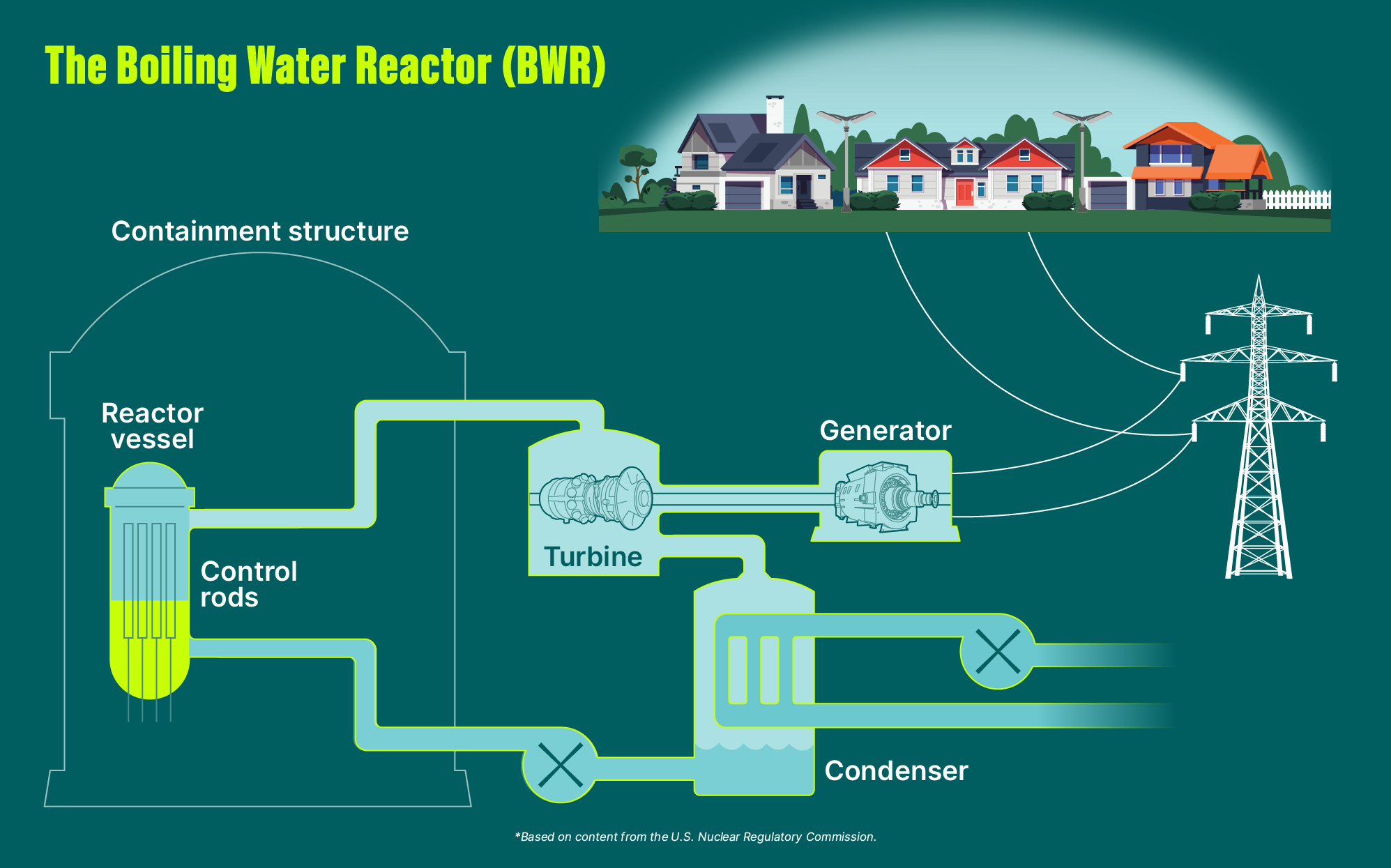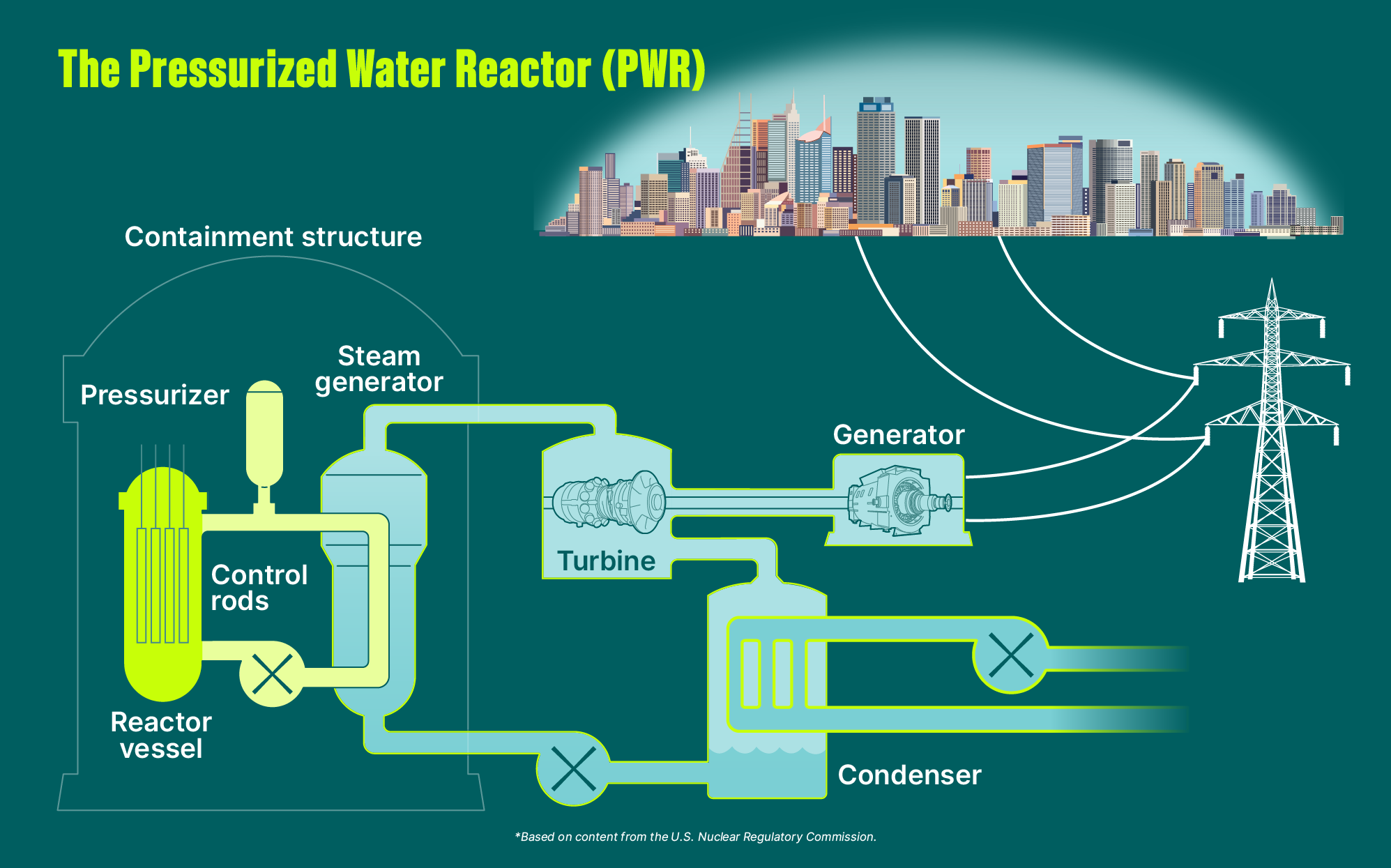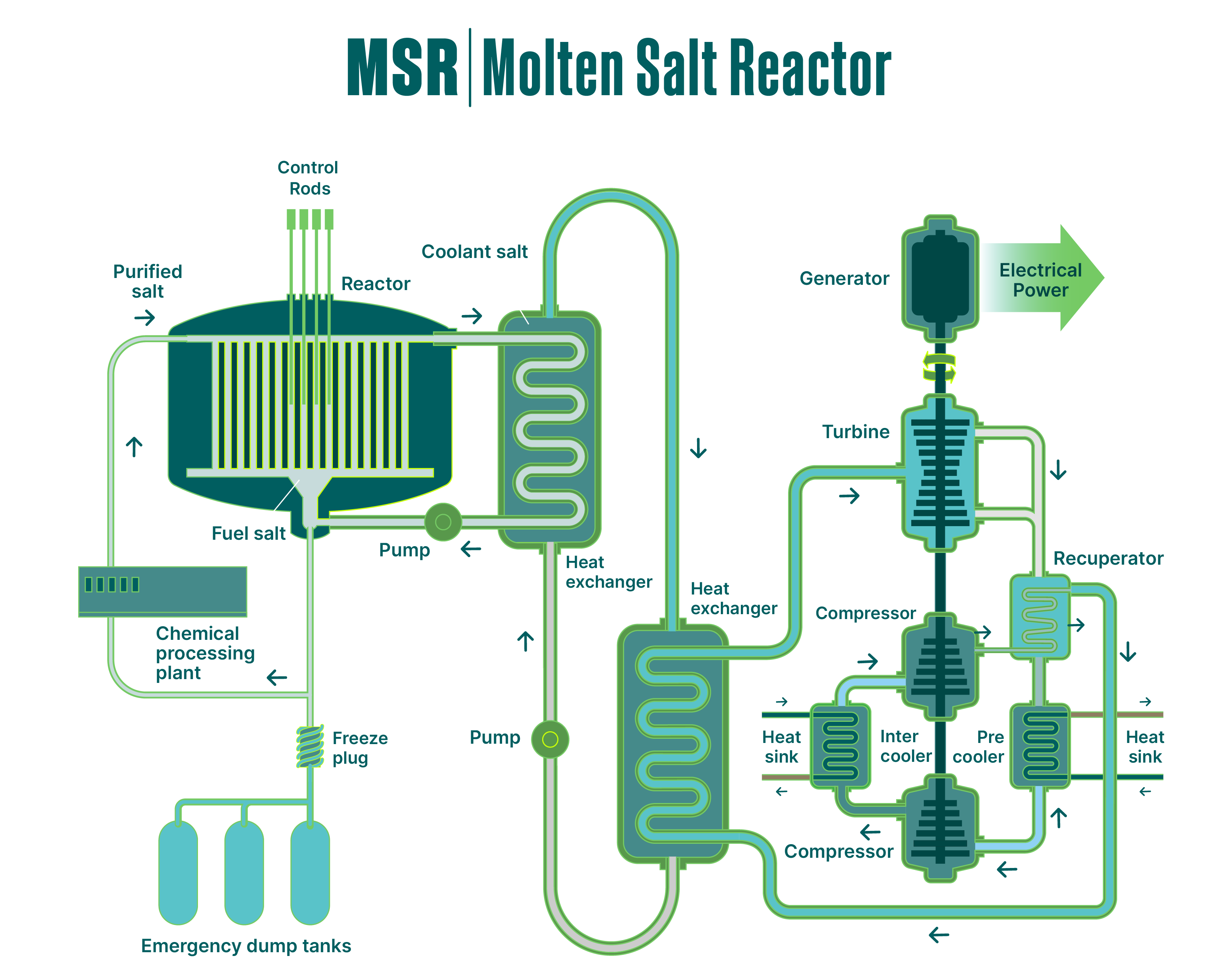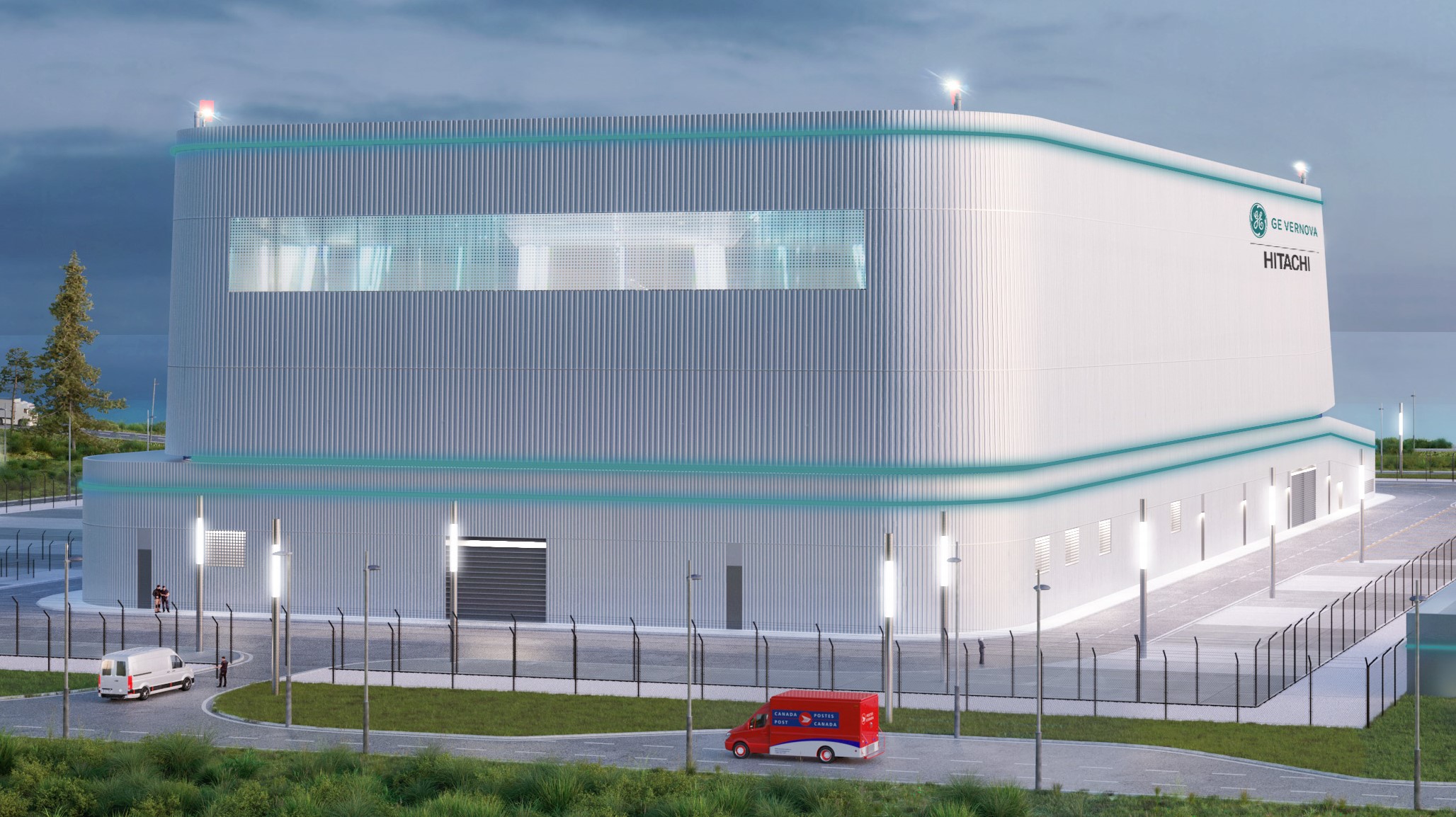Nuclear power basics
For decades, we have been at the forefront of nuclear technology, setting the industry benchmark for reactor design and construction and helping utility customers operate their plants safely and reliably.
Overview
The advantages of nuclear power can include job creation in local communities, grid stabilization in power systems with significant renewable penetration, reduced carbon emissions compared to fossil fuels and the ability to complement renewables. Outside of power generation, nuclear facilities also contribute to the medical field. For example, radioisotopes—a byproduct of nuclear energy production—are widely used in diagnostics and treatment.
of the world's electricity comes from nuclear power
total number of operating nuclear reactors
countries operating nuclear power reactors
At the base level, nuclear energy is an efficient way of boiling water to make steam, which turns turbine generators to produce electricity. In the process of nuclear fission, uranium atoms split inside a reactor to create immense levels of heat. Nuclear energy supplies about 10% of the world’s electricity and approximately 20% of the electricity in the United States. It also makes up 26% of global energy production free from direct CO2 emissions (from operations), and ~50% in the United States.
A total of 32 countries worldwide are operating over 400 nuclear reactors for electricity generation, with another 50+ under construction. The average capacity of the world’s operating reactors is just under 900 MW. With the longer construction times required for large nuclear plants, power providers are starting to transition to smaller reactors called small modular reactors (SMRs). Generally speaking, SMRs have capacities between 20–300 MW.
Nuclear power is known for its high energy density and one fuel pellet (the size of a pencil eraser) can provide as much energy as:
Nuclear power plants uphold high standards for operational safety, security, cybersecurity, and emergency preparedness to protect workers and neighboring communities. Many countries have safely used nuclear power for well over 60 years. It is one of the most carefully monitored and regulated industries in the world. The latest cybersecurity systems and well-trained on-site security personnel provide around-the-clock security.
The reactors are built to strident safety specifications, constantly monitored, and layered with multiple redundancy systems to maintain the unprecedented track record of safety the industry has achieved.
Nuclear reactor types
There are several types of nuclear reactors available, supporting different methods of nuclear fission and coolants to manage heat and neutron flow. With each reactor has its own advantages regarding safety, used fuel management, fuel use, and scalability, and are at various development or deployment stages globally. More than one third of reactors currently operating in the US are GE boiling water reactors (BWR).
Some of the most popular technologies include:
Widely used across the globe, LWRs use water for cooling and moderation and include both boiling water reactors (BWRs) and pressurized water reactors (PWRs). GE Vernova Hitachi Nuclear Energy’s BWRX-300 is a boiling water reactor.
Utilizing liquid sodium as a coolant and fast neutrons for fission, SFRs are known for their high efficiency and fuel recycling ability.
Operating at higher temperatures than other types of reactors, HTGRs use helium gas as its coolant, which encourage efficient electricity generation for wide-use industrial applications.
Mixing liquid fuel with molten salt coolant, these reactors are known for their high thermal efficiency and safety. Using salt as an alternative to other gases offers additional drainage safeguards in the event of overheating.
Light water reactors
Most reactors operating in the world today are either boiling water reactors or pressurized water reactors. While both reactors heat water to produce steam, in a BWR the steam created in the reactor pressure vessel (RPV) goes directly to the steam turbine generator (STG). In a PWR, heat is transferred into a separate water loop within the steam generator, which in turn boils the water for steam generation.


An SMR is a next-generation nuclear power plant engineered to produce up to 300 MW of electricity. Unlike traditional gigawatt-scale reactors, which typically generate ~1,000 MW of electricity, SMR modules can be factory-built and shipped to sites, allowing shorter construction times, cost savings, and scalability.
SMRs are suited for deployment across a range of settings, from remote communities to grid-connected sites. They can support diverse applications including hydrogen production, district heating, and electricity for data centers. GE Vernova Hitachi develops and deploys the BWRX-300 small modular reactor, offering a streamlined and cost-effective configuration with enhanced safety features and a reduced environmental footprint.
FAQ
Nuclear power has the highest capacity factor of any energy source, operating at maximum output more consistently than wind, solar, or fossil fuels.
Nuclear sites also promote continuous operations with longer periods (18-24 months) between refueling. Sustained electricity helps decrease downtime, enhance energy security, and promote grid stability while reducing emissions from supply chains.
Nuclear power generates electricity without emitting direct CO2 during operations. It helps avoid over 471 million metric tons of carbon emissions annually and can play a crucial role in building a more sustainable energy future. Nuclear energy is also essential in complementing renewables during times of intermittency for a more resilient grid.
Nuclear plants operate at a high-energy density, requiring far less space than renewables producing equal amounts of power. This is even more true for latest generation nuclear technology, like small modular reactors.
Nuclear energy can provide reliable electricity and promotes energy security.
Its consistent output promotes a more stable, dependable energy supply vital for national security and economic stability and is backed by the industry's strategic management of its supply chain.
In addition, nuclear power primarily relies on uranium, an abundant resource available from diverse global sources. Industry-wide practices like mining, milling, enrichment, and fuel fabrication—coupled with strategic stockpiling and diversification of uranium sources—help safeguard against supply disruptions. These factors promote a more secure and steady supply of nuclear fuel, reinforcing nuclear power's role as a resilient energy source that underpins energy independence.
Nuclear reactors primarily source uranium-235 and uranium-238 isotopes. These uranium isotopes are characterized by their fissility and ability to sustain chain reactions for significant energy release.
The nuclear fuel cycle describes the production and management of nuclear energy to create electricity.
Explore aspects of the nuclear supply chain below:
Often referred to as nuclear waste, spent fuel can be used in other applications. Spent fuel from a fission reactor still contains more than 90% of its initial potential energy, and new reactor technologies are paving the way for it to be reused for further electricity production.
Nuclear power producers are tied to industry-wide waste safety and storage regulations. The US, for example, stores most of its spent fuel at more than 70 of its heavily monitored reactor sites.
GVH nuclear portfolio
Contact us




